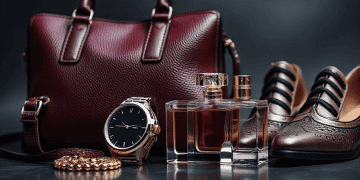A rise in the prices of luxury goods in recent years has led some brands to lose a significant portion of their customer base. Around 50 million potential buyers have been priced out of the luxury market since 2021, as prices rose by approximately 20%, according to Aaron Cheris, a partner at Bain & Co.
In response, several luxury brands are reevaluating their strategies to appeal to “aspirational” consumers—those who purchase at least one luxury item annually, typically spending between $3,000 and $10,000 on fashion, according to McKinsey & Co.
One of the brands responding to this trend is Burberry, which has adjusted its offerings to cater to this group. In a strategy presentation in November 2024, CEO Joshua Schulman announced that Burberry would restore a more accessible price range across its product categories. The company had focused on higher-end products in recent years but saw new customer growth globally during the December holiday season after implementing these changes. Burberry also reported a 4% increase in store sales in the Americas during the third quarter of 2024.
Aspirational consumers, who account for nearly $274 billion in annual spending, are crucial for the luxury industry. Unlike wealthier customers, this group tends to be more sensitive to economic challenges such as inflation and job insecurities.
Experts note that luxury brands may have gone too far in targeting premium segments with high price points. “You can’t do that at such an extreme that you cut out the base of consumers,” Cheris said.
Smaller luxury items such as fragrances, shoes, and accessories are proving to be more accessible to aspirational buyers, with products priced between $400 and $1,000 gaining popularity. Brands like Gucci and Yves Saint Laurent offer such items, with Gucci’s sales in 2024 reflecting a decline in larger product categories but growth in accessories like eyewear.
Burberry is one of the brands adjusting its pricing strategy, focusing on leather goods and entry-level categories that were popular before the price hikes. In addition to this, Burberry emphasized its outerwear and scarf offerings during the holiday season, noting a boost in brand desirability by the end of the third quarter.
However, not all luxury brands are following suit. Moët Hennessy Louis Vuitton, the world’s largest luxury group, continues to offer lower-priced products, but some executives have expressed caution about introducing new affordable luxury lines. Jean-Jacques Guiony, former CFO of the company, stated that the issue lies more with demand than with product offerings or prices.
As economic pressures influence consumer behavior, luxury brands are striving to balance high-end exclusivity with accessible options. Experts suggest that improving the in-store experience could be key to attracting aspirational buyers. Some brands have focused on enhancing their e-commerce platforms, while others are improving in-store services, such as reducing wait times and offering personalized customer experiences.
Jeff Lindquist, a partner at Boston Consulting Group, explained that brands are looking to create stronger customer relationships by improving in-store interactions and supporting sales associates in engaging with customers.
Luxury brands are exploring ways to maintain their premium image while catering to a broader range of consumers, aiming to sustain the allure of luxury without excluding aspirational buyers.
Explore comprehensive supply chain news at The Supply Chain Report. Those interested in international trade can visit ADAMftd.com for free tools.
#LuxuryMarket #ConsumerTrends #BrandStrategy #LuxuryRetail #PriceHikes #AspirationalConsumers #RetailInnovation

















